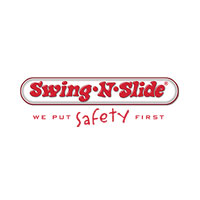The Value of Play
The first “playground” was documented in Boston, Mass., at a Children’s mission on Parmeter Street in 1886. With the placement of huge piles of sand as directed by the mission’s director, children were observed doing what they tend to do naturally: play. The kids used the sand to build tunnels, run, jump and slide. Observers were interested in the children’s imaginary world where sense of place, creativity, and social skills could be cultivated. (Play It Safe, An Anthology of Playground Safety, Wortham, 1992, page 5.)
This is but a mere glimpse into of the beginning of playgrounds. By the turn of the 20th century, educators and researchers interested in studying children and the effects of play brought an awareness to the need for all types of play areas including sports fields, gymnasiums, parks and what we know today as modern playgrounds.
The playground industry has most recently focused on the “value of play,” precluded by two decades of focusing on playground safety. The creation of written guidelines for playgrounds and playground equipment has led to industry standards that have elevated the level of design and manufacturing of playgrounds and play equipment to a higher standard.
Today’s playgrounds, the play equipment, and its immediate surroundings are a fundamental component of urban life in America today. At elementary and pre-schools, childcare facilities, city parks and even in private backyards, playgrounds play a significant role in the communities of America and the lives of children. The “value of play” can be expressed as the service and expectations playgrounds bring to our society.
“Research demonstrates that play is incredibly important to the development of children’s social, emotional, cognitive and physical development as well as to their creativity and imagination,” explains Tom Norquist in The Developmental Benefits of Playgrounds Association for Children’s Education International. “Moreover, play is essential to brain development and is related to the development of intelligence and certain academic and reasoning abilities.”
Playgrounds have become so much a part of modern day life that we often take for granted or at least have come to expect to find opportunities for little ones to play at nearly every retail establishment families encounter on a daily basis. Play structures at fast-food restaurants, malls, amusement parks and at private businesses are quickly becoming the norm. Apartments, hospitals, shelters, ball diamonds, doctor’s offices and airports are all discovering the value of play and playgrounds.
And why not? Who can resist the sound of children laughing, screaming and having fun with other children? Playgrounds create the setting where children and adults can relate to one another and create long-lasting memories of those times spent at the playground.
- Builds physical strengths and ability of children.
- A babysitting service to give parents a needed rest
- A social service to give families, friends, and neighbors a place to congregate
- A service of aesthetic beauty to our community
- A service to challenge and motivate young children
- A service of sensation to many youngsters looking for the thrill of swinging, sliding, or spinning



















Add new comment